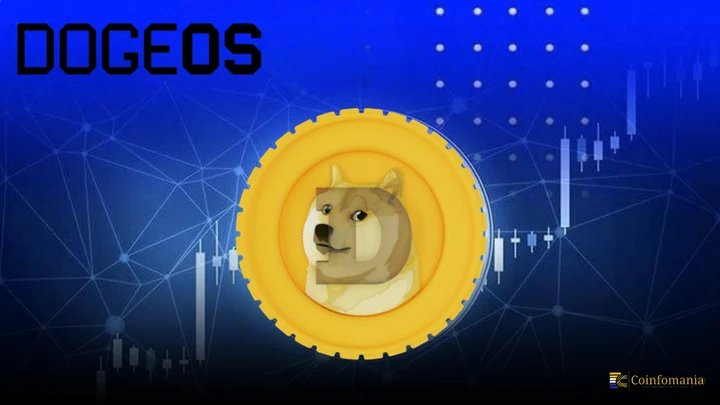DogeOS Secures $6.9 Million in Funding Led by Polychain Capital to Launch Dogecoin App Layer
0
0

DogeOS, a leading application development layer built for the Dogecoin ecosystem, has successfully raised $6.9 million in a funding round led by Polychain Capital. This DogeOS funding marks a strategic milestone in building real-world utility on the Dogecoin blockchain. With backing from notable investors such as Consensys and BlueYard Capital, DogeOS aims to establish itself as the primary Dogecoin smart contract platform. The project intends to enable decentralized applications and smart contract functionality directly on Dogecoin. As demand for reliable development tools grows, DogeOS plans to expand its modular toolkit and enhance infrastructure to support dApps tailored for the Dogecoin developer community.
Polychain-Backed DogeOS Raises Funds to Boost Dogecoin Utility
With strong backing from Polychain Capital, DogeOS is positioning itself as a game-changer for the Dogecoin ecosystem growth. This $6.9 million funding round signals serious investor interest in building beyond Dogecoin’s original use case. DogeOS serves as a smart contract layer, allowing developers to build scalable decentralized apps on Dogecoin’s blockchain. The project brings programmability to the meme coin by creating a modular architecture and a low-latency execution layer. By enabling developers to deploy applications such as DeFi tools, wallets, and gaming apps, DogeOS is set to deepen user engagement across the ecosystem. This layer acts as a bridge between existing Dogecoin functionality and modern Web3 features.
Developer Activity and Adoption Trends in the Dogecoin Ecosystem
As DogeOS raises fresh capital, developer interest in building on Dogecoin has grown steadily. Developer contribution metrics have increased month over month, highlighting a revived curiosity around Dogecoin infrastructure. GitHub commits and public toolkits are now expanding in volume and complexity. This trend shows that DogeOS’s modular layer is reducing technical friction, enabling developers to experiment with decentralized apps more freely.
Institutional interest in Dogecoin is also rising. The presence of Polychain and BlueYard Capital in DogeOS’s investor list signals confidence in Dogecoin’s long-term evolution. With DogeOS bringing programmability and smart contract capabilities to the network, the meme coin is gaining serious infrastructure support. DogeOS funding success is expected to fuel new partnerships and additional developer onboarding in the coming months.
Bringing Smart Utility to the Meme Coin Market
The rise of DogeOS reflects a broader shift in the memecoin space toward real functionality. Once known mainly for humor and speculation, the Dogecoin network now empowers developers with tools to build actual applications. As a Dogecoin smart contract platform, DogeOS introduces smart contract execution and dApp frameworks that enable direct development on the Dogecoin blockchain. This transformation modernizes Dogecoin and attracts a more sophisticated wave of users and developers. By enabling on-chain services, DogeOS positions Dogecoin to stay competitive in a multi-chain Web3 ecosystem where real utility drives adoption and long-term value.
What’s Next for DogeOS and the Dogecoin Ecosystem?
With fresh funding, DogeOS will accelerate the rollout of developer tools and build new features to support the Dogecoin smart contract platform. The team plans to expand infrastructure, add third-party integrations, and engage with the open-source community to improve security and efficiency. The future of the Dogecoin ecosystem growth now hinges on whether developer demand meets user growth. DogeOS will continue pushing the Dogecoin smart contract platform as it rolls out enhancements. As more apps go live, the Dogecoin smart contract platform may reshape how memecoins are perceived in serious Web3 development.
The post DogeOS Secures $6.9 Million in Funding Led by Polychain Capital to Launch Dogecoin App Layer appeared first on Coinfomania.
0
0
 Manage all your crypto, NFT and DeFi from one place
Manage all your crypto, NFT and DeFi from one placeSecurely connect the portfolio you’re using to start.







